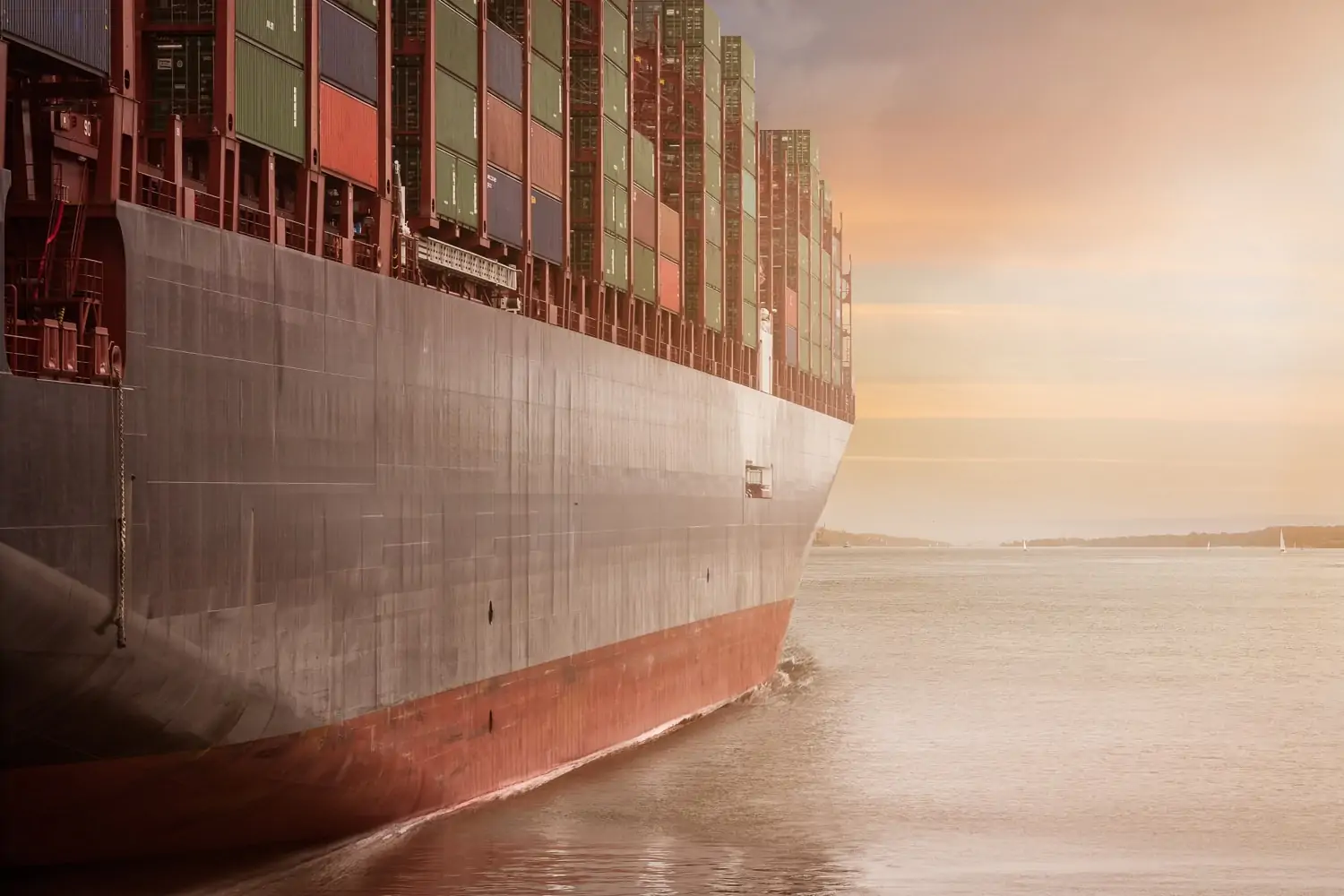
How you transport your goods has a significant impact on your customer experience, as well as your bottom line – and this is especially important when you’re expanding your business internationally.
Choosing between Full Container Load (FCL) and Less than Container Load (LCL) shipping affects your costs, delivery speed and the control you have over your cargo. Get it right and you’ll optimize your supply chain; get it wrong and you may risk delays, unexpected fees – even damaged goods.
In this guide, we’ll break down what FCL and LCL mean, how they each work, their pros and cons – and how to decide which is best for your business.
Jump to:
- What is LCL Shipping?
- What is FCL Shipping?
- LCL vs FCL: A Quick Comparison
- The ‘pros and cons’ of LCL and FCL
- How to Choose Between FCL and LCL
- Real-World Examples
- Partnering with a Logistics Expert
What is LCL Shipping?
LCL stands for Less than Container Load, a shipping method typically used when your goods don’t fill an entire shipping container on their own. Instead, your cargo shares space with freight from other businesses heading to the same destination port.
An ideal option for small to medium-sized shipments that don’t justify the cost of an entire container, LCL transportation means moving product internationally without committing to high inventory or upfront costs. This is especially useful for start-ups, growing e-commerce brands or businesses testing a new market or moving frequent but lower-volume stock.
Here’s how it works:
Your goods are packed, labeled and consolidated with other shipments at a freight forwarder’s warehouse. The mixed cargo then travels in a shared container. Once it reaches its destination port, the container is deconsolidated, your goods are separated and sent on to their final destination.
What is FCL Shipping?
FCL stands for Full Container Load. As the name suggests, with FCL, you rent and fill an entire shipping container, whether or not your goods occupy the whole space.
FCL is well suited to larger shipments that can fill a container or come close to full capacity. Brands that can plan full container shipments regularly value the speed, security, and predictability of this approach, while those shipping high-value, fragile or time-sensitive goods will benefit from having secure, dedicated space.
How it works:
Once packed and sealed at origin, your container remains sealed until it reaches your chosen delivery point. Because the cargo isn’t mixed with other shipments, there are minimal stops and handling along the route.
LCL vs FCL: A Quick Comparison
| Aspect | LCL Shipping | FCL Shipping |
|---|---|---|
| Cargo from | Multiple shippers share a container | Single shipper uses entire container |
| Container sealing | Opened for consolidation/deconsolidation | Sealed at origin, opened at destination |
| Handling points | More handling steps, more touchpoints | Fewer handling steps |
| Customs clearance | Applies to all consolidated cargo | Clearance for single shipment |
| Transit time | Typically longer due to consolidation | Faster, more direct routing |
| Pricing | Pay only for the volume you use | Flat rate per container |
| Risk of damage | Slightly higher, due to more handling | Lower, as cargo isn’t mixed |
The ‘pros and cons’ of LCL and FCL
Advantages of LCL:
With LCL freight, you only pay for the space you use, making it a cost-effective choice for small to mid-size loads. With built-in flexibility, it’s ideal for businesses with fluctuating volumes or growing international demand. Because it also offers more sailing options, it’s often easier to book space at short notice and in smaller batches – useful for last-minute orders, fast-moving inventory, seasonal spikes or those testing new markets.
Disadvantages of LCL:
The trade-off for flexibility is speed. LCL transit typically takes longer, due to the time needed for consolidating and deconsolidating multiple shipments at their origin and destination. Cargo is also handled more frequently, which slightly raises the risk of damage while customs clearance is shared across all shipments in the container, so if one shipment in the container has issues with their paperwork, everyone faces delays.
Advantages of FCL:
Faster transit times, fewer stops and less manual handling en route means FCL offers speed, security and control. Once your container is sealed at origin, it remains untouched until its final delivery, reducing the risk of delay or damage. Pricing is also predictable as you pay a flat rate for the whole container. This becomes more cost-efficient as your volume increases, especially if you’re shipping 15+ cubic meters regularly.
Disadvantages of FCL:
With FCL, you’re paying for the whole container, even if it’s only half full. This means a higher upfront cost and less flexibility for smaller, frequent shipments, as sending half-empty containers often doesn’t make commercial sense. It also demands more advanced planning, storage and logistics capacity on arrival, since the full load of inventory arrives at once – not ideal for brands with rapid turnover or limited warehousing.
How to Choose Between FCL and LCL
So, which option is right for your business? Consider these key factors:
- Shipment Volume
If your shipment is under 15 cubic meters (roughly half a 20ft container), LCL is often more cost-effective. For volumes closer to 20–25 cubic meters, FCL may be the smarter choice (even if the container isn’t completely full) as it avoids consolidation delays and spreads cost over more units. - Budget
LCL keeps international transportation accessible for smaller businesses by letting you ship more flexibly, without tying up capital in bulk inventory. But as your volumes grow, FCL’s flat-rate pricing can be more economical per unit once your shipment size justifies it. - Transit Time
If speed matters, FCL generally wins as it ships direct, avoiding the extra days needed for consolidation and deconsolidation. That can make a big difference for time-sensitive stock or seasonal ranges. For non-urgent freight, LCL can be a smart, cost-saving alternative. - Product Sensitivity
Fragile, high-value or perishable goods are safer in a sealed FCL container with minimal touchpoints. For more durable, well-packaged (non- time-sensitive) items, LCL can still deliver safely and reliably. - Storage and Logistics
With FCL handling large shipments on arrival, you’ll need logistics and space to receive and store bulky inventory efficiently. LCL makes it easier to manage smaller, more frequent deliveries, which can help with cash flow and stock rotation.
Real-World Examples
E-commerce startup testing a new market?
LCL is an ideal way to ship smaller batches while testing demand in a new territory. You can avoid overcommitting capital and can scale up gradually.
Established retailer with seasonal stock?
If you’re preparing for an important seasonal launch, FCL will secure stock in bulk at a better unit price, ensuring efficient delivery without the risk of delays even during high-demand periods.
Wholesale supplier expanding to the UK/EU?
In this scenario, a blended approach could be beneficial: use FCL to send core, high-volume SKUs to keep costs low and LCL for topping up for urgent, smaller or more niche shipments that don’t require full containers.
Partnering with a Logistics Expert
Whether you ship via LCL, FCL or a combination of both, working with the right logistics partner makes all the difference. A specialist third-party logistics (3PL) provider like ILG can help you build a shipping strategy that balances speed, cost and stock levels – seamlessly managing customs, warehousing and last-mile delivery.
For US brands expanding to the UK or Europe, partnering with ILG means:
- Smooth end-to-end customs clearance and compliance support
- Consolidated warehousing and smart inventory management
- Flexible solutions that scale with your business – whether you’re sending full containers or partial loads
By working with a partner who understands your shipping profile, you can avoid common pitfalls and ensure your freight arrives on time and in perfect condition – ready for your customers.
Ready to find the best shipping solution for your business?
Talk to our international freight experts and discover how ILG can streamline your supply chain, so you can focus on growing your brand across borders.
Explore smarter shipping with ILG and get in touch today.
Contact Us
Written by Sam Taylor
Performs a central role in developing our most longstanding relationships with customers and helping them grow and thrive. Sam is ILG’s customer service champion, upholds our highest standards of care and designs productive fulfilment strategies that can adapt easily in step with fast-moving customer needs. A typical day sees him working hand in hand with customers and our internal teams to find practical solutions to continuously improve performance.
More insights >
7 E-Commerce Logistics Pain Points Outsourced Fulfillment Solves
Struggling with e-commerce fulfillment? Discover how outsourced fulfillment solves 7 logistics pain points to reduce costs, scale faster and improve customer experience.
Five Steps To Switching Your Fulfillment Provider
For every business that relies on a fulfillment/3PL partner to get products into the hands of their customers, working with the right provider is a must.

